Follicular flushing during oocyte retrieval in assisted reproductive techniques
- PMID: 36409927
- PMCID: PMC9678381
- DOI: 10.1002/14651858.CD004634.pub4
Follicular flushing during oocyte retrieval in assisted reproductive techniques
Abstract
Background: Follicular aspiration under transvaginal ultrasound guidance is routinely performed as part of assisted reproductive technology (ART) to retrieve oocytes for in vitro fertilisation (IVF). The process involves aspiration of the follicular fluid followed by the introduction of flush, typically culture media, back into the follicle followed by re-aspiration. However, there is a degree of controversy as to whether this intervention yields a larger number of oocytes and is hence associated with greater potential for pregnancy than aspiration only.
Objectives: To assess the safety and efficacy of follicular flushing as compared with aspiration only performed in women undergoing ART.
Search methods: We searched the following electronic databases up to 13 July 2021: the Cochrane Gynaecology and Fertility Specialised Register of Controlled Trials, CENTRAL (containing output from two trial registries and CINAHL), MEDLINE, Embase, and PsycINFO. We also searched LILACS, Google Scholar, and Epistemonikos. We reviewed the reference lists of relevant papers and contacted experts in the field to identify further relevant studies.
Selection criteria: We included randomised controlled trials (RCTs) that compared follicular aspiration and flushing with aspiration alone in women undergoing ART using their own gametes. Primary outcomes were live birth rate and miscarriage rate per woman randomised.
Data collection and analysis: Two review authors independently assessed studies identified by search against the inclusion criteria, extracted data, and assessed risk of bias. A third review author was consulted if required. We contacted study authors as needed. We analysed dichotomous outcomes using Mantel-Haenszel odds ratios (ORs), 95% confidence intervals (CIs), and a fixed-effect model, and we analysed continuous outcomes using mean differences (MDs) between groups presented with 95% CIs. We examined the heterogeneity of studies via the I2 statistic. We assessed the certainty of evidence using the GRADE approach.
Main results: We included 15 studies with a total of 1643 women. Fourteen studies reported outcomes per woman randomised, and one study reported outcomes per ovary. No studies were at low risk of bias across all domains; the main limitation was lack of blinding. The certainty of the evidence ranged from moderate to very low, and was downgraded for risk of bias, imprecision, and inconsistency. We are uncertain of the effect of follicular flushing on live birth rate compared to aspiration alone (OR 0.93, 95% CI 0.59 to 1.46; 4 RCTs; n = 467; I2 = 0%; moderate-certainty evidence). This suggests that with a live birth rate of approximately 30% with aspiration alone, the equivalent live birth rate with follicular flushing lies between 20% and 39%. We are uncertain of the effect of follicular flushing on miscarriage rate compared to aspiration alone (OR 1.98, 95% CI 0.18 to 22.22; 1 RCT; n = 164; low-certainty evidence). This suggests that with a miscarriage rate of approximately 1% with aspiration alone, the equivalent miscarriage rate with follicular flushing lies between 0% and 22%. We are uncertain of the effect of follicular flushing on oocyte yield (MD -0.47 oocytes, 95% CI -0.72 to -0.22; 9 RCTs; n = 1239; I2 = 61%; very low-certainty evidence); total number of embryos (MD -0.10 embryos, 95% CI -0.34 to 0.15; 2 RCTs; n = 160; I2 = 58%; low-certainty evidence); and clinical pregnancy rate (OR 1.12, 95% CI 0.85 to 1.51; 7 RCTs; n = 939; I2 = 46%; low-certainty evidence). The duration of the retrieval process may be longer with flushing (MD 175.44 seconds, 95% CI 152.57 to 198.30; 7 RCTs; n = 785; I2 = 87%; low-certainty evidence). It was not possible to perform a meta-analysis for adverse events, although individual studies reported on outcomes ranging from depression and anxiety to pain and pelvic organ injury.
Authors' conclusions: The effect of follicular flushing on both live birth and miscarriage rates compared with aspiration alone is uncertain. Although the evidence does not permit any firm conclusions on the impact of follicular flushing on oocyte yield, total number of embryos, number of cryopreserved embryos, or clinical pregnancy rate, it may be that the procedure itself takes longer than aspiration alone. The evidence was insufficient to permit any firm conclusions with respect to adverse events or safety.
Trial registration: ClinicalTrials.gov NCT02277210.
Copyright © 2022 The Cochrane Collaboration. Published by John Wiley & Sons, Ltd.
Conflict of interest statement
EG has no interests to declare.
PM has no interests to declare.
YC is a consultant for Complete Fertility, and has received lecture fees from Merck (to April 2021).
IG is a principal investigator on a project grant from Bayer. She declares that she has not received the funds personally and cannot access or control the spending of the moneys.
Figures
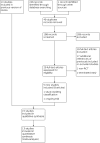

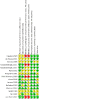
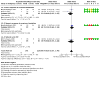
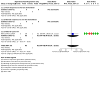
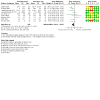
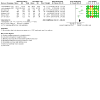
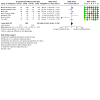
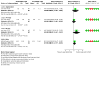
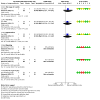
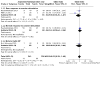
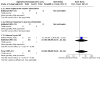
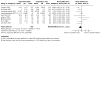
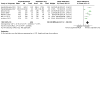




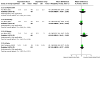
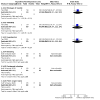
Update of
-
Follicular flushing during oocyte retrieval in assisted reproductive techniques.Cochrane Database Syst Rev. 2018 Apr 26;4(4):CD004634. doi: 10.1002/14651858.CD004634.pub3. Cochrane Database Syst Rev. 2018. Update in: Cochrane Database Syst Rev. 2022 Nov 21;11:CD004634. doi: 10.1002/14651858.CD004634.pub4. PMID: 29697138 Free PMC article. Updated.
References
References to studies included in this review
Calabre 2020 {published data only (unpublished sought but not used)}
-
- Calabre C, Schuller E, Celebi C, Meyer N, Lichtblau I, Pirrello O. Is the follicular flushing usefull for poor ovarian response, a prospective controlled randomised trial. Human Reproduction 2018;33:i302.
-
- Calabre C, Schuller E, Goltzene M-A, Rongières C, Celebi C, Meyer N, et al. Follicular flushing versus direct aspiration in poor responder IVF patients: a randomized prospective study. European Journal of Obstetrics & Gynecology and Reproductive Biology 2020;248:118-22. - PubMed
-
- NCT01329302. Benefit of follicular flushing during oocyte retrieval for poor responder patient in an assisted reproductive technology program [Follicular flushing for poor responder patient in an assisted reproductive technology program: Flush Study]. clinicaltrials.gov/show/NCT01329302 (first received 5 April 2011).
de Souza 2021 {published data only (unpublished sought but not used)}
-
- Souza MM, Mancebo ACA, Barbeitas ALO, Antunes RA, Areas PCF, De Souza MCB. Double versus single lumen needle: still worth this question? Jornal Brasileiro de Reproducao Assistida 2019;23(3):312.
-
- Souza MM, Mancebo ACA, Souza MDCB, Antunes RA, Barbeitas AL, Raupp VA, et al. Evaluation of follicular flushing with double lumen needle in patients undergoing assisted reproductive technology treatments. JBRA Assisted Reproduction 2021;25:272-5. [DOI: 10.5935/1518-0557.20210009] - DOI - PMC - PubMed
Haines 1989 {published data only}
-
- Haines CJ, Emes AL, O'Shea RT, Weiss TJ. Choice of needle for ovum pickup. Journal of In Vitro Fertilisation and Embryo Transfer 1989;6(2):111-2. - PubMed
Haydardedeoglu 2011 {published data only}
-
- Haydardedeoglu B, Cok T, Kilicdag EB, Parlakgumus AH, Simsek E, Bagis T. In vitro fertilization-intracytoplasmic sperm injection outcomes in single- versus double-lumen oocyte retrieval needles in normally responding patients: a randomized trial. Fertility and Sterility 2011;95(2):812-4. - PubMed
-
- NCT00995280. Single lumen needle without flushing or double lumen needle with follicle flushing in oocyte retrieval [Single lumen needle without flushing or double lumen needle with follicle flushing in oocyte retrieval]. clinicaltrials.gov/show/NCT00995280 (first received 15 October 2009).
Haydardedeoglu 2017 {published data only}
-
- Haydardedeoglu B, Gjemalaj F, Aytac PC, Kilicdag EB. Direct aspiration versus follicular flushing in poor responders undergoing intracytoplasmic sperm injection: a randomised controlled trial. British Journal of Obstetrics and Gynaecology 2017;124(8):1190-6. - PubMed
-
- NCT02391155. Follicular flushing outcomes in singles versus double lumen oocyte retrieval needles in poor responding patients (needles(opu)) [Follicular flushing outcomes in singles versus double lumen oocyte retrieval needles in poor responding patients: a randomized controlled trial]. clinicaltrials.gov/show/NCT02391155 (first received 18 March 2015).
Kara 2012 {published data only}
-
- Kara M, Aydin T, Turktekin N. Is follicular flushing really effective? A clinical study. Archives of Gynecology and Obstetrics 2012;286(4):1061-4. - PubMed
Kingsland 1991 {published data only}
-
- Kingsland CR, Taylor CT, Aziz N, Bickerton N. Is follicular flushing necessary for oocyte retrieval? A randomized trial. Human Reproduction 1991;6(3):382-3. - PubMed
Kohl Schwartz 2020 {published data only (unpublished sought but not used)}
-
- NCT02641808. Does follicular flushing improve the outcome in monofollicular IVF therapy? (Flushing). clinicaltrials.gov/show/NCT02641808 (first received 29 December 2015).
Lainas 2018 {published data only (unpublished sought but not used)}
-
- Lainas G, Sfontouris I, Lainas T, Makris A, Venetis C, Zorzovilis I, et al. Follicular flushing is associated with a significantly higher oocyte recovery rate compared to no flushing: a randomized controlled trial. Human Reproduction 2018;33:i456-7.
-
- NCT03354858. Follicular flushing versus direct aspiration [Oocyte recovery rate following follicular flushing versus direct aspiration in women undergoing IVF]. clinicaltrials.gov/show/NCT03354858 (first received 28 November 2017).
Levens 2009 {published data only}
Malhotra 2020 {published and unpublished data}
-
- CTRI/2017/07/009062. A randomized control trial comparing egg flushing vs direct aspiration during egg recovery in women with poor responders undergoing IVF [A randomized controlled trial comparing follicular flushing and direct aspiration at oocyte retrieval in poor responders undergoing in vitro fertilization]. trialsearch.who.int/Trial2.aspx?TrialID=CTRI/2017/07/009062 (first received 17 July 2017).
-
- Malhotra N, Dolkar D, Mahey R, Singh N. To flush or not to flush: a randomized controlled trial comparing follicular flushing and direct aspiration at oocyte retrieval in poor responders undergoing IVF. Fertility and Sterility 2017;108 Suppl 1(3):e237-8.
-
- Malhotra N, Vignarajan CP, Dolkar D, Mahey R, Vanamail P. Follicular flushing versus direct aspiration at oocyte retrieval in poor responders undergoing in vitro fertilization: a randomized controlled trial. Journal of Human Reproductive Sciences 2020;13:150-4. [DOI: 10.4103/jhrs.JHRS_59_19] - DOI - PMC - PubMed
Mok‐Lin 2013 {published data only}
-
- NCT01558141. Follicular flushing [Follicular flushing on cycle outcomes in poor responders]. clinicaltrials.gov/show/NCT01558141 (first received 20 March 2012).
Scott 1989 {published data only}
-
- Scott RT, Hofmann GE, Muasher SJ, Acosta AA, Kreiner DK, Rosenwaks Z. A prospective randomized comparison of single- and double-lumen needles for transvaginal follicular aspiration. Journal of In Vitro Fertilization and Embryo Transfer 1989;6(2):98-100. - PubMed
Tan 1992 {published data only}
-
- Tan SL, Waterstone J, Wren M, Parsons J. A prospective randomized study comparing aspiration only with aspiration and flushing for transvaginal ultrasound-directed oocyte recovery. Fertility and Sterility 1992;58(2):356-60. - PubMed
von Horn 2017 {published and unpublished data}
-
- NCT02365350. Randomized clinical trial on follicular flushing in IVF [A randomized, controlled, open trial comparing a 17 g single lumen aspiration needle with a modified double lumen needle system (STEINER-TAN Needle®) for follicular flushing during oocyte pick-up in IVF patients with poor ovarian response]. clinicaltrials.gov/show/NCT02365350 (first received 28 February 2015).
-
- Horn K, Depenbusch M, Schultze-Mosgau A, Griesinger G. Randomized, open trial comparing a modified double-lumen needle follicular flushing system with a single-lumen aspiration needle in IVF patients with poor ovarian response. Human Reproduction 2017;32(4):832-5. - PubMed
-
- Horn K, Depenbusch M, Schultze-Mosgau A, Schopper B, Griesinger G. Randomized, open trial comparing a modified double-lumen needle follicular flushing system with a single-lumen aspiration needle in IVF patients with poor ovarian response. Human Reproduction 2016;31:i289. - PubMed
References to studies excluded from this review
Avila 2013 {published data only}
-
- Avila A, Diaz-Spndola P, Santos-Haliscak R, Obeso-Montoya I, Davila-Garza A, Garcia-Villafaña G. Follicle flushing does not improve reproductive outcomes in ART program. Fertility and Sterility 2013;100(3 Suppl):S499–500.
Aydin 2017 {published data only}
-
- Aydin A, Taplamaciogly F, Gokce F. What is the effect of follicle flushing on oocyte yield and quality in ART cycles of poor responders? Human Reproduction Abstract Book of the 33rd Annual Meeting of the ESHRE, Switzerland 2017;32:i246-7.
Bagtharia 2005 {published data only}
-
- Bagtharia S, Haloob ARK. Is there a benefit from routine follicular flushing for oocyte retrieval? Journal of Obstetrics and Gynaecology 2005;25(4):374-6. - PubMed
Biljan 1997 {published data only}
-
- Biljan MM, Dean N, Hemmings R, Bissonnette F, Tan SL. Prospective randomized trial of the effect of two flushing media on oocyte collection and fertilization rates after in vitro fertilization. Fertility and Sterility 1997;68(6):1132-4. - PubMed
Dean 1997 {published data only}
-
- Dean N, Biljan MM, Hemmings R, Bissonette F, Tan SL. Prospective randomized trial on effects of different flushing media on collection and fertilization rates in IVF procedures. Journal of Reproduction and Fertility 1992;19:22 (Abstract No. 44).
el Hussein 1992 {published data only}
-
- el Hussein E, Balen AH, Tan SL. A prospective study comparing the outcome of oocytes retrieved in the aspirate with those retrieved in the flush during transvaginal ultrasound directed oocyte recovery for in-vitro fertilization. British Journal of Obstetrics and Gynaecology 1992;99(10):841-4. - PubMed
Faller 2010 {published and unpublished data}
-
- Faller E, Pirrello O, Wittemer C, Ohl J. Follicular flushing with double-lumen needle among low responder patients: preliminary study of 79 cases. Human Reproduction Abstract Book of the 26th Annual Meeting of the ESHRE, Rome 2010;25 Suppl 1:i153.
Ghosh 2002 {published data only}
-
- Ghosh S, Chatterjee R, Goswami S, Chakraborty BN. Follicular flushing at OCR - should we do away with it? Human Reproduction Abstract Book of the 18th Annual Meeting of the ESHRE, Vienna 2002;17 Suppl 1:51 (Abstract no. O-145).
Gordon 2002 {published data only}
-
- Gordon AC, Gadd SC, Kendrew H, Spearman P, Williams C, Walker D, et al. Prospective randomized comparison of two commercially prepared flushing media for IVF/ICSI. Human Reproduction Abstract Book of the 18th Annual Meeting of the ESHRE, Vienna 2002;17 Suppl 1:163 (Abstract no. P-4810).
Khalifa 1999 {published data only}
-
- Khalifa EAM, Buraidah KFSH. Routine use of normal saline as flushing media has no impact on fertilization, embryo development and pregnancy rates in assisted reproductive technologies. Fertility and Sterility 1999;72 Suppl 1:193-4.
Knight 2001 {published data only}
-
- Knight DC, Tyler JP, Driscoll GL. Follicular flushing at oocyte retrieval: a reappraisal. Australian & New Zealand Journal of Obstetrics & Gynaecology 2001;41(2):210-3. - PubMed
Lenz 1987 {published data only}
-
- Lenz S, Lindenberg S, Fehilly C, Petersen K. Are ultrasonic-guided follicular aspiration and flushing safe for the oocyte? Journal of In Vitro Fertilization and Embryo Transfer 1987;4(3):159-61. - PubMed
Mehri 2014 {published data only}
Mendez Lozano 2008 {published data only}
-
- Mendez Lozano DH, Scheffer JB, Frydman N, Fay S, Fanchin R, Frydman R. Optimal reproductive competence of oocytes retrieved through follicular flushing in minimal stimulation IVF. RBM Online 2008;16(1):119-23. - PubMed
NCT02277210 {unpublished data only}
-
- NCT02277210. Follicular flushing in patients with suboptimal responses. clinicaltrials.gov/show/NCT02277210 (first received 28 October 2014).
Neyens 2016 {published data only}
-
- Neyens S, De Neubourg D, Peeraer K, De Jaegher N, Spiessens C, Debrock S, et al. Is there a correlation between the number of follicular flushings, oocyte/embryo quality and pregnancy rate in assisted reproductive technology cycles? Results from a prospective study. Gynecologic and Obstetric Investigation 2016;81(1):34-40. - PubMed
Pabuccu 2021 {published data only}
-
- Pabuccu EG, Arslanca T, Ucar U, Celikel O, Keles G, Pabuccu R. Follicular flushing using double lumen needle yields more oocytes in mono-follicular poor responders. Journal of Gynecology Obstetrics and Human Reproduction 2021;50(9):102150. - PubMed
Pirrello 2011 {published data only}
-
- Pirrello O, Faller E, Catherine R, Jeanine O, Laurence M, Brigitte F, et al. Follicular flushing with double lumen needle among low responder patients: a preliminary study. Human Fertility (Abstract of the 7th Biennial Conference of the UK Fertility Societies: The Association of Clinical Embryologists, British Fertility Society, and the Society for Reproduction and Fertility. Also participating: Irish Clinical Embryologists Association, ICE, and the Irish Fertility Society) 2011;14(2):143.
Waterstone 1992 {published data only}
-
- Waterstone JJ, Parsons JH. A prospective study to investigate the value of flushing follicles during transvaginal ultrasound-directed follicle aspiration. Fertility and Sterility 1992;57(1):221-3. - PubMed
Ziebe 2000 {published data only}
-
- Ziebe S, Sunde A, Erb K. Evaluation of a new fully synthetic flushing medium in a prospective randomised multi-centre study. Human Reproduction (Abstract of the 16th ESHRE, Bologna) 2000;15:74 (Abstract no. O-0185).
References to studies awaiting assessment
Ronchetti 2022 {published data only}
-
- NCT03611907. Comparing two types of needle for oocytes retrieval (NEEDLE) [Prospective randomized controlled trial comparing different needles for oocyte's retrieval]. clinicaltrials.gov/show/NCT03611907 (first received 2 August 2018).
-
- Ronchetti C, Cirillo F, Immediata V, Gargasole C, Scolaro V, Morenghi E, et al. A monocentric randomized controlled clinical trial to compare single- and double-lumen needles in oocytes retrieval procedure in assisted reproductive technologies. Research Square 5 May 2022;Preprint. [DOI: 10.21203/rs.3.rs-1596207/v1] - DOI - PubMed
References to ongoing studies
ChiCTR1800016671 {published data only}
-
- ChiCTR1800016671. The correlation between follicular flushing and oocyte retrieval in poor ovarian responders undergoing in vitro fertilization [The correlation between follicular flushing and oocyte retrieval in poor ovarian responders undergoing in vitro fertilization]. https://trialsearch.who.int/?TrialID=ChiCTR1800016671 (registered 15 June 2015).
Additional references
GRADEpro GDT [Computer program]
-
- GRADEpro GDT. Version accessed 23 October 2017. Hamilton (ON): McMaster University (developed by Evidence Prime). Available at gradepro.org.
Higgins 2011a
-
- Higgins JPT, Green S, editor(s). Cochrane Handbook for Systematic Reviews of Interventions Version 5.1.0 (updated March 2011). The Cochrane Collaboration, 2011. Available from training.cochrane.org/handbook/archive/v5.1/.
Higgins 2011b
-
- Higgins JPT, Altman DG, Sterne JAC. Chapter 8: Assessing risk of bias in included studies. In: Higgins JP, Green S, editor(s). Cochrane Handbook for Systematic Reviews of Interventions Version 5.1.0 (updated March 2011). The Cochrane Collaboration, 2011. Available from training.cochrane.org/handbook/archive/v5.1/.
Higgins 2021
-
- Higgins JP, Thomas J, Chandler J, Cumpston M, Li T, Page MJ, Welch VA, editor(s). Cochrane Handbook for Systematic Reviews of Interventions Version 6.2 (updated February 2021). Cochrane, 2021. Available from training.cochrane.org/handbook/archive/v6.2.
Lefebvre 2021
-
- Lefebvre C, Glanville J, Briscoe S, Littlewood A, Marshall C, Metzendorf M-I, et al. Chapter 4: Searching for and selecting studies. In: Higgins JP, Thomas J, Chandler J, Cumpston M, Li T, Page MJ, Welch VA, editor(s). Cochrane Handbook for Systematic Reviews of Interventions Version 6.2 (updated February 2021). Cochrane, 2021. Available from training.cochrane.org/handbook/archive/v6.2.
Levy 2012
Neumann 2018
-
- Neumann K, Griesinger G. Follicular flushing in patients with poor ovarian response: a systematic review and meta-analysis. Reproductive BioMedicine Online 2018;36(4):408-15. - PubMed
Roque 2012
The ESHRE Working Group on Ultrasound in ART 2019
Toftager 2017
-
- Toftager M, Bogstad J, Løssl K, Prætorius L, Zedeler A, Bryndorf T, et al. Cumulative live birth rates after one ART cycle including all subsequent frozen-thaw cycles in 1050 women: secondary outcome of an RCT comparing GnRH-antagonist and GnRH-agonist protocols. Human Reproduction 2017;32(3):556-67. [DOI: 10.1093/humrep/dew358.] - DOI - PubMed
Vaughan 2017
Vermey 2019
References to other published versions of this review
Georgiou 2018
Wongtra‐ngan 2004
Publication types
MeSH terms
Associated data
LinkOut - more resources
Full Text Sources
Medical
Research Materials
Miscellaneous

